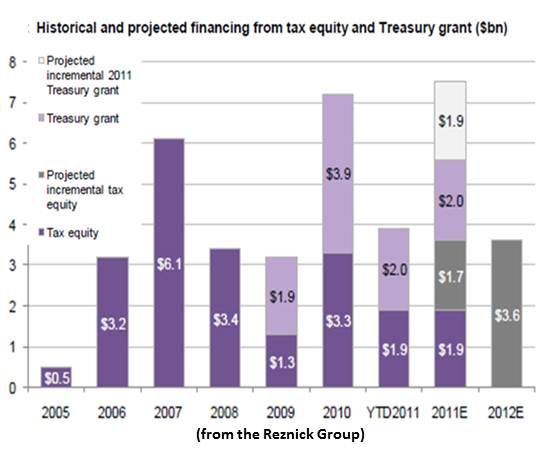The wind industry is not likely to save its production tax credit (PTC) in time to sustain continued growth into 2013. The solar industry has lost its 1603 cash grant provision. The geothermal industry’s federal PTC expires at the end of 2013.
Some in renewables are planning a retreat until a better economy and a less contentious, more supportive Congress offer a chance at stable, long-term federal supports like those enjoyed by the fossil and nuclear industries.
PA Consulting Group renewable energy expert Barbara Sands has begun thinking about “things that need to be looked at closer” and “things that may have to happen” for renewables to compete, in the absence of federal incentives, with natural gas at $4.50/MMBtu (million British thermal units) which, Sands said, is “the current forward market for natural gas prices.”
“Between 2009 and 2011,” Sands wrote, “the federal cash grant program provided almost $10 billion to renewable facilities, reducing the direct cost to customers by approximately 30 percent.”

Federal incentives have been withdrawn from renewables industries before, but never with so many state-level renewable energy standards in place. “More than $20 billion may be shifted from the federal level (i.e., all taxpayers) to the customers in states with RPS [renewable portfolio standard] targets,” Sands observed. This presents “complex challenges,” Sands wrote. “Players across the supply chain will need to adapt.”
Sands focused on three areas and offered some broad generalizations about how rigorous that adaptation must be. To compete with that $4.50/MMBtu natural gas price, she said, “the capital cost of wind projects would need to be at least 35 percent lower,” placing significant pressure on wind industry manufacturers.
“The capital cost of solar projects would need to decrease by an even greater amount,” she wrote, to “make them more competitive.” That “will be challenging,” she added, “given the equipment cost decreases already.”
Broadly speaking, she wrote, the solutions are reduced capital costs and an increase in performance efficiency in the form of better capacity factors.
For wind, Sands said, “I looked at the full cost of a combined cycle gas plant as compared to the levelized cost of wind.” She calculated a levelized cost of energy (LCOE) obtained from a PA Consulting assessment of project costs for “a combination of plants that have been developed across the U.S.,” a turbine life cycle of twenty years, and a variety of developers’ expenses, including a $2,000-per-kilowatt capital cost, O&M expenses, a 38 percent capacity factor and estimated returns.
In Sands’ estimation, “natural gas prices would need to almost triple from the current levels of less than $3.00/MMBtu for renewables to begin to be competitive on a total cost per megawatt-hour basis.” That is a lot, she agreed. “There is room for improvement,” Sands said, “but it is going to be challenging.”
Sands acknowledged limitations to her assessment. “I didn’t do a research paper. I don’t have absolute statistics.” But from “what we’re seeing in the marketplace, what we’re seeing from developers, what we’re seeing in terms of the experience over time,” Sands said, the improvements in “per-unit cost” and “performance output” suggest there is at least the possibility to make the necessary advances.
There are some questions about Sands’ broad numbers.
Many LCOE calculations for wind assume a 25-year turbine life. As a recent breakthrough LCOE calculation for solar demonstrated, five years can make a big difference in competitiveness.
_540_449_80.jpg)
In some cases, wind is already near the projected natural gas price. “Natural gas, at $2.50 per MMBtu, is probably four cents a kilowatt-hour,” enXco Board Vice Chair Jim Walker recently told GTM. He described an Xcel Energy-NextEra Energy contract that delivers a “levelized cost to ratepayers” of approximately 3.3 cents per kilowatt-hour. If the 2.2 cents per kilowatt-hour PTC is levelized over twenty years, he said, that is “about five cents per kilowatt-hour unsubsidized.”
And “capacity factor does range significantly,” Sands admitted, from the “low 30s to the low 40s.” Her 38 percent capacity factor for wind is within the range used by researchers, but could be advanced by the newest turbine technologies and site selection methods.
“I have not,” she also noted, “looked into the specifics of the individual cost components and the drivers for that to see where along the value chain they could potentially reduce the cost.”
The shift imposed by state renewables standards will, Sands said, cause utilities to pressure regulators to allow them to pass the increased costs for renewables on to ratepayers. “I think that utilities are doing that now,” Sands noted. But they also, she added, “work closely with the regulators to get approval for the renewables contracts” and “they manage their portfolios closely” to get “the lowest-cost renewables for their consumers.”
Utilities are also, Sands said, looking “to see if there might be some modifications to the portfolio standards or what qualifies as renewables” that might reduce the cost burdens. Adding new, larger-scale hydro facilities to the portfolio-eligible renewables, Sands noted, is one possibility.
Sands said she wasn’t attempting to answer the question of whether it is possible for renewables to compete without federal incentives but, she said, “I think ‘challenging’ is the appropriate word.”



